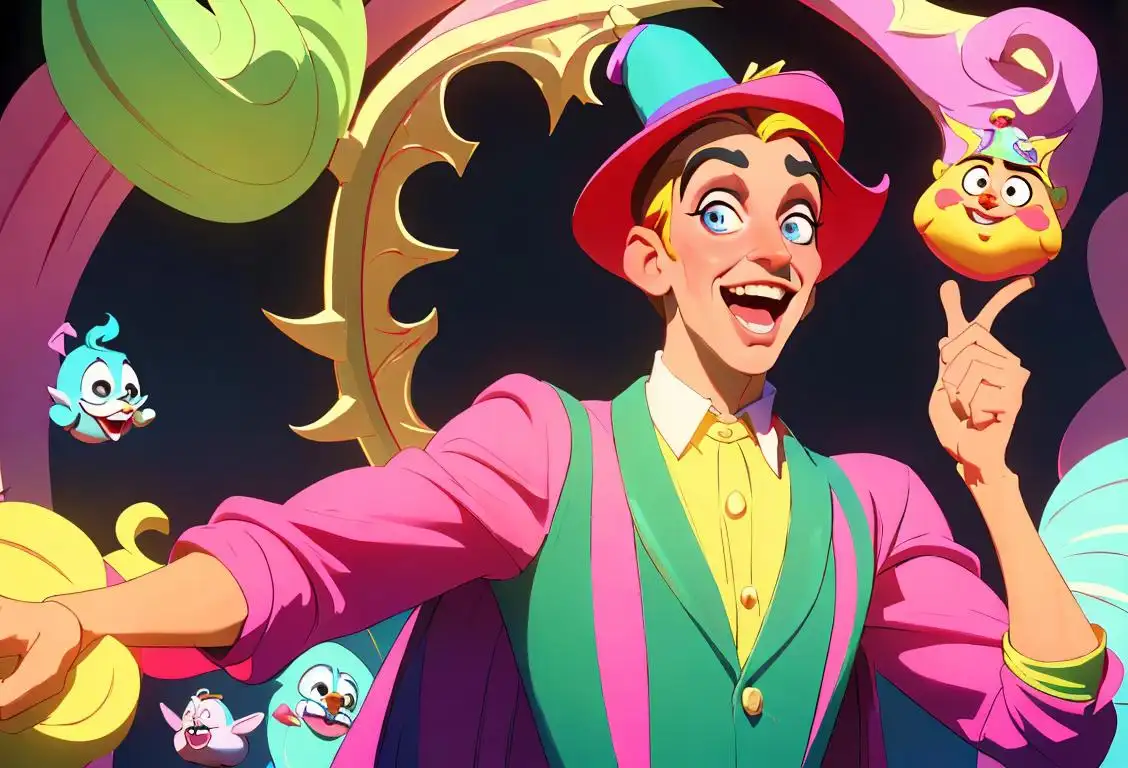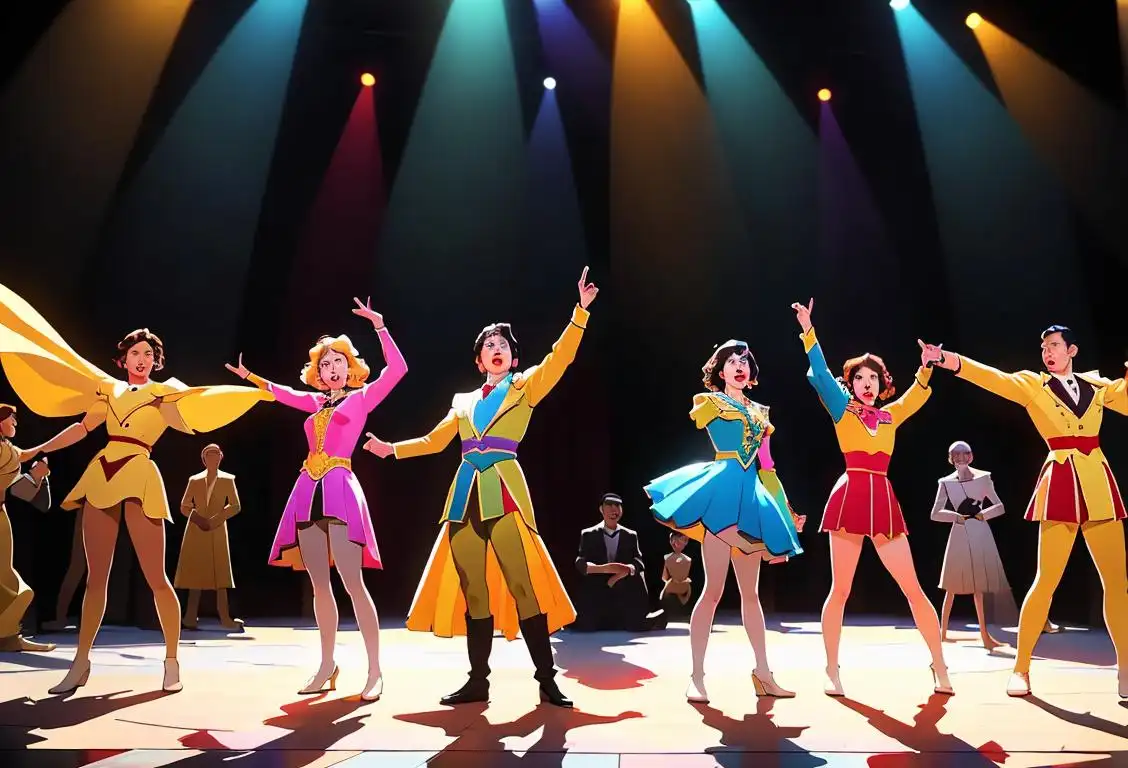National Pantomime Day

Get ready to put on your dancing shoes and prepare your best theatrical voice, because it's National Pantomime Day! This delightful day celebrates the vibrant and humorous world of pantomime, a form of theatrical performance that never fails to bring smiles and laughter to audiences everywhere. So, grab your popcorn and settle in for a journey into the whimsical realm of panto!
When is Pantomime Day?
It's national pantomime day on the 17th November.
A Brief History of Pantomime
Pantomime, often referred to as 'panto' for short, is a type of musical comedy performance characterized by its exaggerated acting, slapstick humor, and audience participation. It originated in ancient Greece and Rome, but the modern form of pantomime as we know it today evolved in England in the 18th century. One of the key elements of pantomime is the use of stock characters such as the hero, the villain, and the comedic sidekick. These larger-than-life characters, along with the colorful costumes, catchy songs, and witty dialogue, make pantomimes a unique and entertaining experience.Audience Interaction and Traditions
What sets pantomimes apart from other forms of theater is the active involvement of the audience. Whether it's shouting 'He's behind you!' or singing along to popular songs, audience participation is encouraged and expected during a pantomime performance. Additionally, there are several traditional elements that are commonly found in pantos. These include the 'pantomime dame,' a comedic male character played by a man in drag, and the 'principal boy,' a female character portrayed by a young man. The inclusion of cross-dressing adds to the hilarity and charm of pantomimes, creating whimsical moments that will have you in stitches.Pantomime in the Digital Age
With the advent of the internet and social media, pantomime has found a new home online. Pantomime enthusiasts can now connect with each other, share their love for this unique art form, and even watch recorded performances from the comfort of their own homes. National Pantomime Day serves as a reminder of the enduring popularity of pantos and encourages people to explore this entertaining world for themselves.Did You Know?
During World War II, pantomimes played an essential role in boosting morale on the home front. With their lighthearted comedy and uplifting performances, pantos provided a much-needed escape from the hardships of war. So, next time you watch a pantomime, remember the important role it played in keeping spirits high during challenging times.History behind the term 'Pantomime'
16th century
Commedia dell'arte
The term 'pantomime' finds its roots in the 16th century Commedia dell'arte, a form of improvisational theater popular in Italy. Commedia dell'arte combined scripted plots with improvised dialogue, physical comedy, and extravagant costumes. Pantomime was originally performed as a silent, mimed form of entertainment within these comedic plays, often portraying exaggerated characters and humorous situations.
1667
Introduction of Commedia dell'arte
In 1667, the term 'pantomime' made its first appearance in the realm of theater in Italy. It was influenced by the Commedia dell'arte, a popular form of improvisational theater characterized by stock characters and exaggerated physicality. Commedia dell'arte performers, known as 'mimes,' used gestures, body language, and facial expressions to convey stories.
18th century
Pantalone and the Harlequinade
During the 18th century, pantomime took on a new dimension in England. It became known as the 'Harlequinade,' inspired by the Commedia dell'arte character Harlequin, who wore a distinctive diamond-patterned outfit. This version of pantomime incorporated slapstick comedy, acrobatics, and dance, oftentimes featuring elaborate scene changes and magical transformations. The Harlequinade became a staple of British theater, especially around Christmas time, and was performed as a separate piece following a spoken play.
1723
John Weaver's Contribution
In 1723, an English dancer and choreographer named John Weaver introduced pantomime as a distinct form of storytelling in the United Kingdom. Weaver combined elements of ballet and Commedia dell'arte techniques to create a unique art form. Unlike traditional mime performances, his pantomime productions incorporated spoken dialogue and song, paving the way for the later development of British pantomime.
19th century
The rise of silent performances
Throughout the 19th century, pantomime transformed into a standalone art form, separate from the Commedia dell'arte and Harlequinade traditions. Silent performances, relying solely on physical expression, gestures, and exaggerated movements, became the defining characteristic of pantomime. Pantomimes grew in popularity, captivating audiences with their blend of humor, spectacle, and imaginative storytelling. Famous pantomime characters such as the Principal Boy and the Dame were established during this period, adding to the rich tapestry of the art form.
19th Century
Evolution into Family Entertainment
Throughout the 19th century, pantomime evolved into a form of family entertainment, particularly in the United Kingdom. The traditional British pantomime, often staged during the Christmas season, blended comedy, music, dance, and audience participation. Pantos featured fairy tales, popular folk stories, or literary classics with exaggerated characters, slapstick humor, and catchy songs. The inclusion of cross-dressing actors playing female characters became a distinctive feature of British pantomime.
20th Century
Pantomime's Influence on Silent Films
During the early 20th century, pantomime played a significant role in the development of silent films. As silent movies lacked dialogue, actors relied on physical expression and exaggerated movements to convey emotions and advance the plot. Influenced by pantomime traditions, performers such as Charlie Chaplin, Buster Keaton, and Harold Lloyd mastered the art of nonverbal communication, captivating audiences worldwide with their comedic and dramatic performances.
20th century
Pantomime on the silver screen
As the 20th century dawned, pantomime expanded beyond the stage and transitioned to the silver screen. Silent film stars like Charlie Chaplin and Buster Keaton perfected the art of physical comedy, drawing inspiration from pantomime. While the popularity of silent films waned with the advent of sound, the influence of pantomime on the development of cinema remained significant. The physical comedy and expressive acting techniques employed in pantomime continue to impact modern-day film-making and acting.
Present day
Pantomime's enduring tradition
Today, pantomime remains an integral part of the cultural landscape, particularly in the United Kingdom. It is primarily performed during the holiday season, with countless productions engaging audiences of all ages. Pantomime combines elements of fairy tales, pop culture references, music, dance, and audience participation to create a unique form of theatrical entertainment. Its enduring popularity and ability to bring joy and laughter continue to make pantomime a cherished tradition around the world.
21st Century
Modern Interpretations and Global Popularity
In the 21st century, pantomime has continued to thrive as a beloved form of live entertainment. The traditional British pantomime has evolved to incorporate modern references, celebrity guest appearances, and elaborate stage productions. Although British pantomime remains popular, pantomime performances have also gained popularity worldwide, transcending cultures and language barriers. Today, pantomime is appreciated for its ability to entertain audiences of all ages through its interactive nature, physical comedy, and timeless stories.
Did you know?
During World War II, pantomimes played an essential role in boosting morale on the home front.Tagged
fun entertainment theaterFirst identified
2nd February 2016Most mentioned on
17th November 2016Total mentions
19Other days
Panto Day
Tours Were Canceled Is A Crime Against Theatre Day
Pantomime Day
Television Show Day
Twilight Zone Day
Best Dick Day
Tv Station Rounded Up News Session For The Day
Sport Day
Podcast Day
Video Games Day








